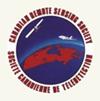Quantifying Woody Plant Encroachment in Grasslands: A Review on Remote Sensing Approaches
IF 2.1
4区 地球科学
Q3 REMOTE SENSING
引用次数: 6
Abstract
Abstract Grasslands are an important global ecosystem, providing essential ecological and economic ecosystem services. Over the last couple decades, as a result of climate change and human activities, nearly 50% of global grasslands have degraded. Woody plant encroachment (WPE), one of the outcomes of climate change and human-related activities, negatively affects grasslands’ ecology, as well as their ability to produce food for livestock, habitats for wildlife, and economic returns for rangeland managers. Long-term monitoring of grassland status can facilitate grassland restoration. Additionally, the study of factors that influence grassland dynamics (e.g., grazing, fire, land use, or climate) can help in the restoration of grasslands. Remote sensing (RS) has been used to map the spatiotemporal distribution of WPE by using a wide variety of sensors and methods, necessitating a review on the effectiveness of RS data for WPE monitoring. Based on the importance of RS data and the rate at which grassland ecosystems are changing, this paper provides a literature review on a theoretical basis for quantifying WPE using RS and on existing RS approaches for WPE monitoring. Lastly, it identifies the current challenges associated with quantifying spatio-temporal variability in WPE that future research will need to overcome.草地木本植物入侵的遥感定量研究进展
摘要草地是重要的全球生态系统,提供重要的生态和经济生态系统服务。在过去的几十年里,由于气候变化和人类活动,全球近50%的草原已经退化。木本植物入侵是气候变化和人类相关活动的结果之一,对草原的生态、为牲畜生产食物的能力、野生动物的栖息地以及牧场管理者的经济回报产生了负面影响。对草原状况进行长期监测可以促进草原恢复。此外,对影响草原动态的因素(如放牧、火灾、土地利用或气候)的研究有助于草原的恢复。遥感(RS)已被用于通过使用各种传感器和方法绘制WPE的时空分布图,因此有必要对遥感数据对WPE监测的有效性进行审查。基于RS数据的重要性和草原生态系统的变化速度,本文对使用RS量化WPE的理论基础以及现有的用于WPE监测的RS方法进行了文献综述。最后,它确定了未来研究需要克服的与量化WPE时空变异性相关的当前挑战。
本文章由计算机程序翻译,如有差异,请以英文原文为准。
求助全文
约1分钟内获得全文
求助全文
来源期刊

Canadian Journal of Remote Sensing
REMOTE SENSING-
自引率
3.80%
发文量
40
期刊介绍:
Canadian Journal of Remote Sensing / Journal canadien de télédétection is a publication of the Canadian Aeronautics and Space Institute (CASI) and the official journal of the Canadian Remote Sensing Society (CRSS-SCT).
Canadian Journal of Remote Sensing provides a forum for the publication of scientific research and review articles. The journal publishes topics including sensor and algorithm development, image processing techniques and advances focused on a wide range of remote sensing applications including, but not restricted to; forestry and agriculture, ecology, hydrology and water resources, oceans and ice, geology, urban, atmosphere, and environmental science. Articles can cover local to global scales and can be directly relevant to the Canadian, or equally important, the international community. The international editorial board provides expertise in a wide range of remote sensing theory and applications.
 求助内容:
求助内容: 应助结果提醒方式:
应助结果提醒方式:


